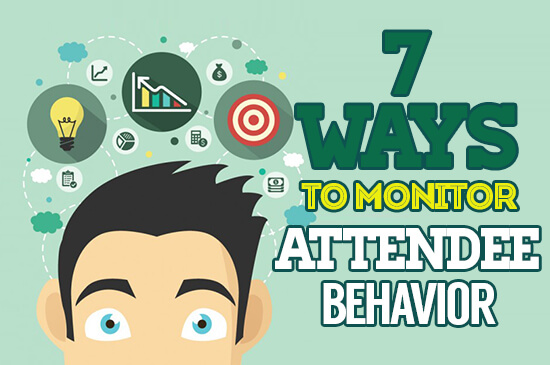Both types of attendee data – self-reported and behavioral – are required to obtain a 360-degree understanding of attendees. A complete and comprehensive profile of individuals enables organizers to design the marketing and programming of the event around their interests and preferences.
Options For Tracking Attendees
The range of technologies available to monitor actual attendee behavior is increasing. In most cases, the data is collected by devices and remixed by software hosted in the cloud. There are seven major technologies to consider for tracking attendees on site.
1. Beacons and Bluetooth Low Energy (BLE) are two complementary technologies that work together. Beacons are small radio transmitters. They deliver signals that can be detected by smart devices equipped with Bluetooth Low-Energy technology. The signal “wakes up” an app on the attendee’s smartphone and the app records the day, time, and duration of the of the attendee’s visit near the beacon. The mobile app combines the location data with registration information so that specific individuals can be identified.
2. Radio frequency identification (RFID) technology works passively without the need for smart user devices. Readers and antennae send a radio signal to a tag (often embedded in attendee badges or wristbands). The RFID tag then uses the transmitted signal to power on, and send information (a unique number) back to the reader. The reader takes the tag information, records the day, time and duration of the “ping,” and transmits the data wirelessly to software in the cloud where it is matched with registrant data.
3. Near field communication (NFC) also involves a radio signal transmission (it’s actually a type of high-frequency RFID), but unlike beacons and long-range RFID it only works when the reader and the chip are no more than an inch apart – a characteristic that also makes it more secure. It’s commonly used in tap and go systems, to enable cashless payments or in event check-in apps. Software can also record the date, time, and duration of an attendee’s visit along with all of his NFC-enabled interactions across the event.
4. WiFi/BLE fingerprinting uses both the WiFi access points that already exist inside a convention center and Bluetooth beacons. When the booths and aisles are in place, the technology provider walks the floor with a smartphone. An app captures signals (fingerprints) at every intersection and enters them into a database. During the exhibition, attendee devices detect either the Bluetooth or WiFi signals and the app (which they have downloaded) compares where they are (by the signal their own phones emit) to the database of fingerprints. The app records the day, time, and duration of the visit, which when combined with registration data and other qualifiers, indicates where specific attendees go inside the venue.
5. WiFi Monitoring uses battery-powered or plug-in sensors to detect the wireless signals emitted by attendees’ smartphones. The information is used to create heat maps and other graphical representations that depict attendee movements. The system usually cannot identify specific individuals unless accompanied by software that compares the signals to other more detailed information, but it is good for looking at traffic flows in general.
6. Floor sensors measure foot traffic through actual footfall. Pressure-sensitive 2-feet-by-2-feet mats are linked together in a grid and hidden under carpeting, utility mats, or floor graphics. They passively monitor attendee paths to the exact step and duration. No device or interaction is required from the attendee. Software can provide reports on behavior patterns, but does not identify the individual attendees.
7. Drones are becoming more visible at indoor events. Those equipped with cameras can record aerial snapshots and video of attendee movements. Currently, they are used primarily to create 3D images and immersive real-life views of meeting spaces and facilities. They can certainly advise event organizers of emergency situations, such as overcrowded venues.
Selecting The Best Technology
When deciding which of the technologies to purchase, event organizers should consider a number of criteria:
Hardware-only or full service. Does the provider just provide beacons or floor sensors or an end-to-end service including installation, software, placement strategy, training, and promotion?
Read range. What is the distance at which the technology can accurately detect an attendee’s location? NFC works at a range of an inch, while RFID can work up to 30 feet.
Security. Is the individual’s identity exposed to hackers?
Identity. Can the technology identify individuals (as with beacons, RFID, NFC, and WiFi/BLE fingerprinting) or does it only deliver anonymous, aggregate data?
Passive or interactive. Does the system require attendee action (such as an NFC tap or an app download) or will it work without any action required (such as RFID, foot sensors, drones)?
In Conclusion
Learning what attendees actually do on site is critical. It adds to the picture of participants that is only partially formed by registration data. There are a number of technologies that can assist organizers in collecting digital data and transforming it into insight and more tailored offerings. Organizers need to ask solution providers specific questions about their underlying technologies to separate fact from fiction and find the best fit for the event and the venue.





